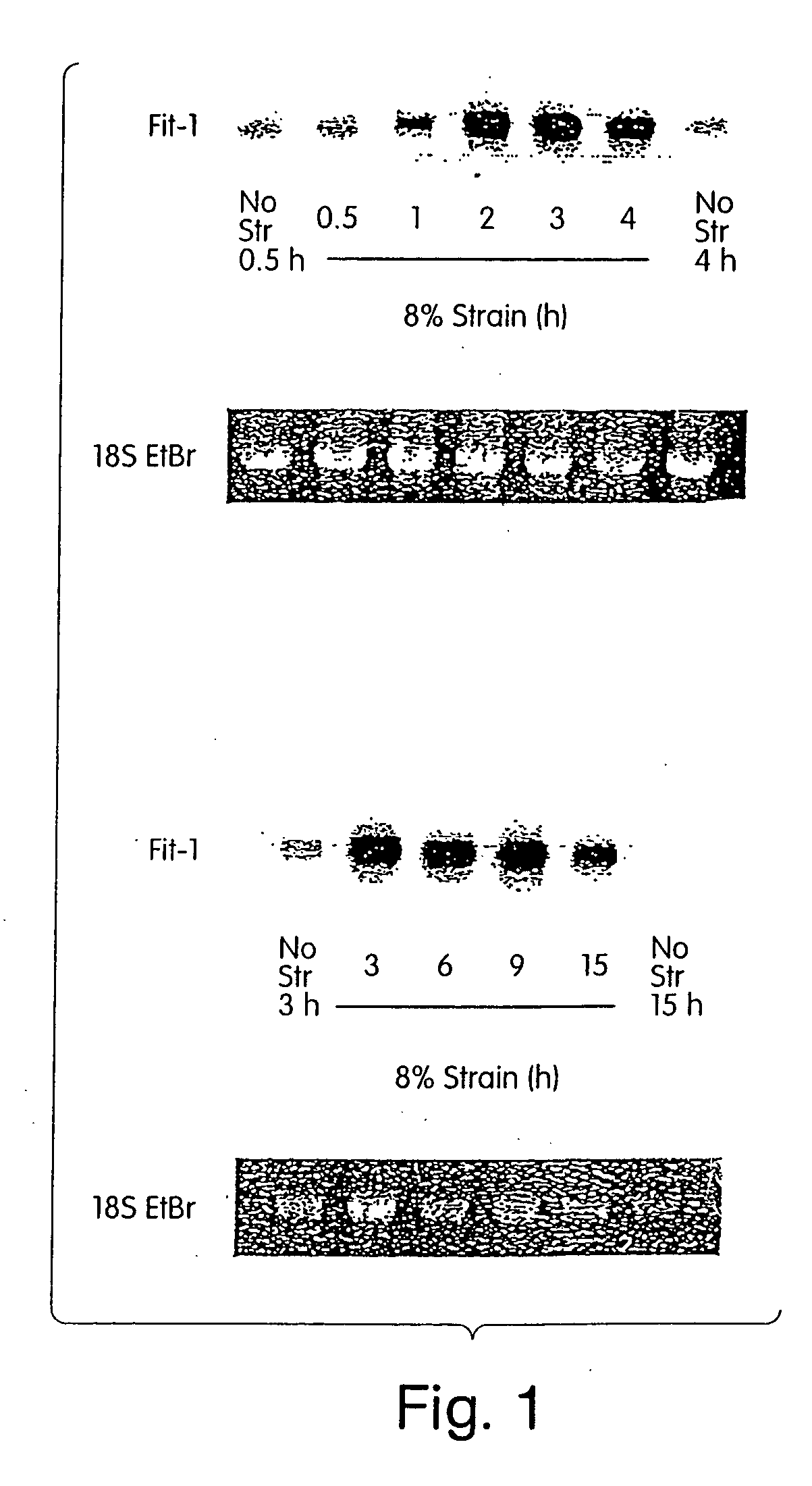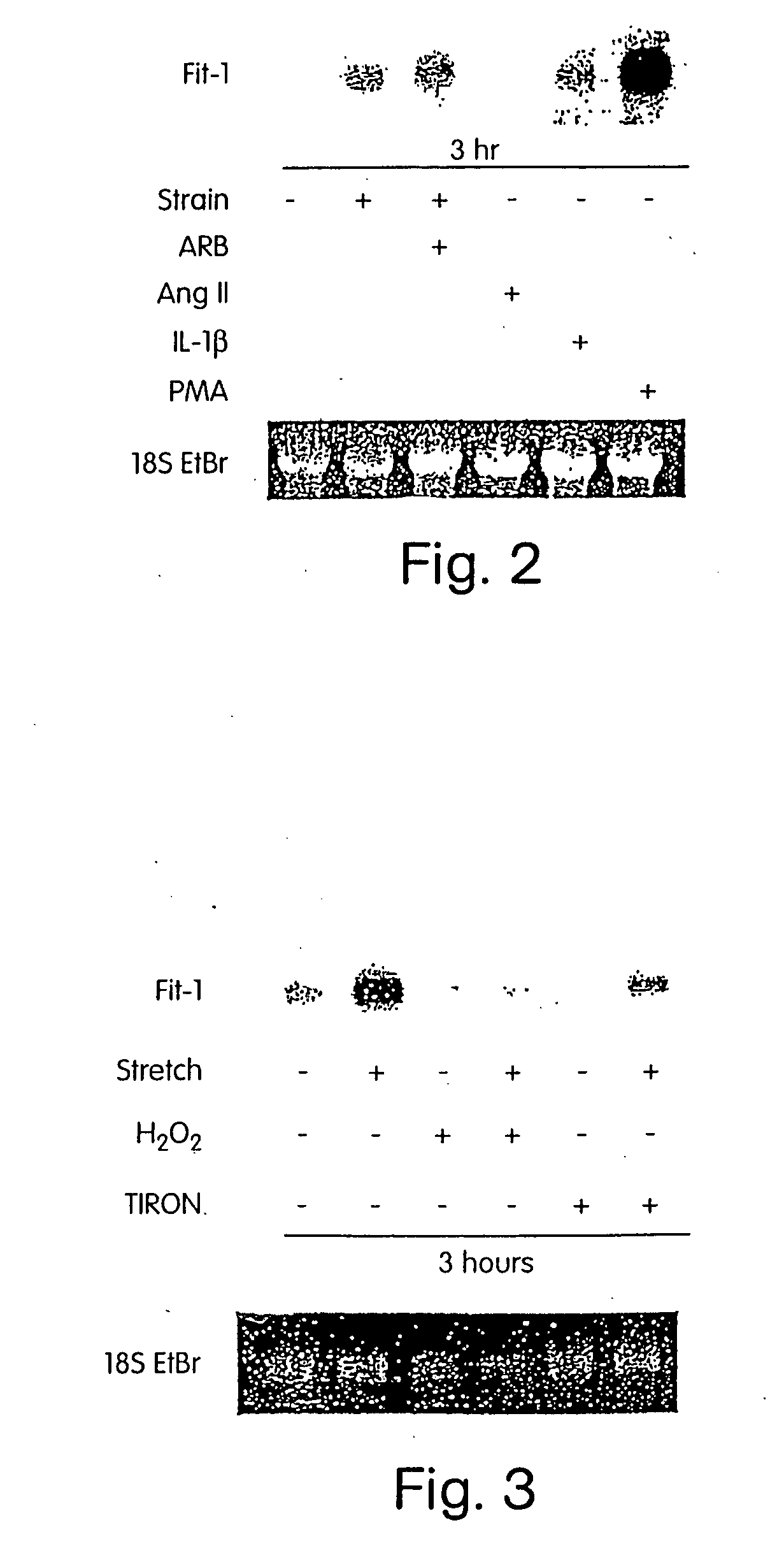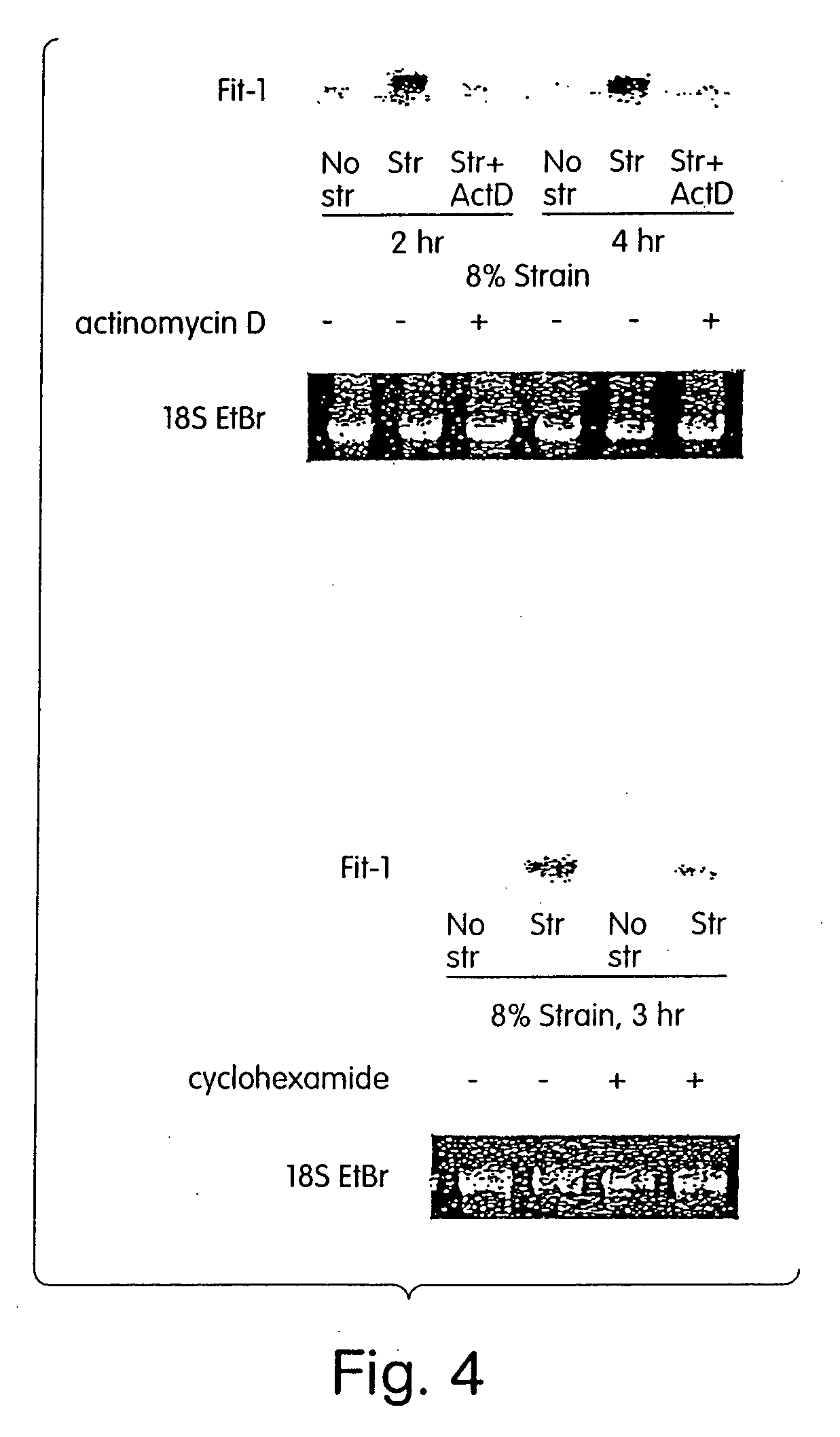IL1RL-1 as a cardiovascular disease marker and therapeutic target
a cardiovascular disease and marker technology, applied in the field of diagnosis and treatment of cardiovascular conditions, can solve the problems of insufficient data describing diagnostic tests to determine whether certain therapies can be expected to be more or less effective, the single most common cause of morbidity and mortality in the developed world, and so as to reduce the risk of cardiovascular disease, reduce the risk of cardiovascular disorder, and reduce the risk of the subj
- Summary
- Abstract
- Description
- Claims
- Application Information
AI Technical Summary
Benefits of technology
Problems solved by technology
Method used
Image
Examples
example 1
Experimental Protocols: Materials and Methods
[0222] Mechanical Strain Device
[0223] Experiments of mechanically overloading cardiomyocytes have generally been performed by stretching cells with no control of the cardiac cycle, an approach that does not allow distinction between mechanical overload in contraction versus relaxation. In the present study, we designed and constructed a unique experimental system that allows precisely controlled mechanical strains as well as electrical pacing in cultured cardiomyocytes, to investigate, inter alia, how cardiomyocyte mechanotransduction is regulated by the cardiac cycle, and identify genes that are involved in such regulation.
[0224] The Pacing-Strain Device. The approach to mechanical stimulation used an apparatus that has multiple platens that contact the underside of silicone elastomer membranes to apply a spatially isotropic biaxial strain profile to the membrane (Schaffer J L, et al., J Orthop Res, 1993,12:709-719; and U.S. Provisio...
example 2
Introduction:
[0239] Cytokines and Cardiac Injury. Stress-activated cytokines participate in many forms of cardiac injury and pathophysiological conditions, the most characterized ones being tumor necrosis factor-α, interleukin-1 and interleukin-6. These molecules are not constitutively expressed in the normal heart but are rapidly induced during ischemia and reperfusion or upon hemodynamic overloading, suggesting that they play an important role in the initial myocardial response to stress, injury or growth stimuli (Mann D L, Cytokine and Growth Factor Reviews. 1996;7:341-354; St. John Sutton M G, et al. Circulation. 2000; 101:2981-2988). However, cytokines have also been shown to be stably expressed in pathologic myocardial conditions including ischemic heart disease and heart failure and are associated with a poor prognosis (Pulkki K J, et al. Annals of Medicine. 1997; 29:339-343; Kubota T, et al Proc Natl Acad Sci. 1998;95:6930-6935; Aukrust P, et al. Am J Cardiol 1999;83:376-3...
example 3
Methods
[0266] Study populations. The Thrombolysis in Myocardial Infarction (TIMI) 14 trial was a randomized, open-label, dose-ranging study of combination reperfusion therapy for patients with ST-segment elevation MI conducted between March 1997 and July 1998. Specifically, this study was an angiographic trial comparing 4 different thrombolytic combinations: abciximab alone, alteplase alone, abciximab with reduced dose of alteplase, and abciximab with reduced dose of streptokinase (Antman E M et al., Circulation, 1999; 99:2720-32; Antman E M et al., Eur Heart J, 2000; 21:1944-53). The ENTIRE-TIMI 23 trial was an open-label, dose-ranging, multicenter study conducted between February 2000 and September 2001 to evaluate enoxaparin as adjunctive antithrombin therapy with various forms of pharmacological reperfusion, including full-dose tenecteplase and half-dose tenecteplase plus abciximab (Antman E M et al., Circulation. 2002; 105:1642-9). In both studies, patients were eligible for ...
PUM
| Property | Measurement | Unit |
|---|---|---|
| Tm | aaaaa | aaaaa |
| temperatures | aaaaa | aaaaa |
| pressure | aaaaa | aaaaa |
Abstract
Description
Claims
Application Information
 Login to View More
Login to View More - R&D
- Intellectual Property
- Life Sciences
- Materials
- Tech Scout
- Unparalleled Data Quality
- Higher Quality Content
- 60% Fewer Hallucinations
Browse by: Latest US Patents, China's latest patents, Technical Efficacy Thesaurus, Application Domain, Technology Topic, Popular Technical Reports.
© 2025 PatSnap. All rights reserved.Legal|Privacy policy|Modern Slavery Act Transparency Statement|Sitemap|About US| Contact US: help@patsnap.com



